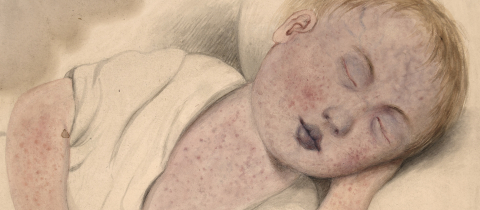Lead is nasty. Since the body has a tough time eliminating it, exposure to very small amounts can cause poisoning over the long term. Diagnosis of lead poisoning is challenging because of the variety of symptoms it can produce. Vomiting, constipation, abdominal pains, headaches, mood disorders, high blood pressure, tingling sensations and fatigue can all be the result of lead poisoning, but of course these symptoms can also have other causes. Then there are the truly worrisome issues like developmental problems, learning difficulties and eventual loss of mental faculties. Lead poisoning is most worrisome in children under the age of six when the nervous system is still forming.
Exposure to lead-based paint in old buildings is a big problem, and lead paint still crops up in some imported toys that kids may put in their mouths. There is also the problem of lead in water in areas where old lead pipes are still in use. Since our body has no requirement for lead, every effort should be made to avoid ingesting lead compounds, but total avoidance is impossible since lead occurs naturally in the soil and gets incorporated into anything that grows in the soil. And that includes cacao trees and therefore chocolate. Yes there is lead in chocolate and that has raised the ire of some activist groups who claim this represents a risk especially to children. And what better time to get publicity for a warning about chocolate than Valentine’s Day. So a California watchdog group called “As You Sow” has trotted out its annual chocolate scare.
So, how much should we worry about eating chocolate? Let’s play with numbers a little. Total avoidance of lead is impossible, but the World Health Organization has determined that a tolerable daily intake for children is 3.6 micrograms per kg per day. This means that even if this amount is consumed every day, no problems are foreseen. A 20 kg child can therefore consume 72 micrograms of lead a day. Dark chocolate has the most lead with 0.07 micrograms per gram. That means 50 grams, a pretty good chunk of chocolate, will only contain 3.5 micrograms of lead. Milk chocolate has less, but cocoa powder has more, at 0.25 micrograms per gram, but a serving of cocoa would only be about 7 grams which yields 1.75 micrograms of lead. Far from the daily tolerable limit of 72!
Of course lead is found in other foods as well. Berries contain as much as chocolate, and one normally eats a greater weight of berries than of chocolate. A glass of canned apple juice would have more lead than a serving of chocolate. Liver contains thousands of times more, but warnings about liver do not make the headlines. Even when the lead in all food consumed is totaled, it is unlikely that a child would exceed the 72 micrograms. Nevertheless, lead intake should be minimized as much as possible. And with chocolate, improved processing can reduce levels because studies have shown that the lead content of the finished product is greater than that found to occur naturally in the beans. The lead likely comes from machinery and air drying in places like Nigeria where leaded gasoline is still used. The bottom line here is that if you are eating enough chocolate to have to worry about lead, you are eating way too much chocolate.
Happy Valentine’s Day.







